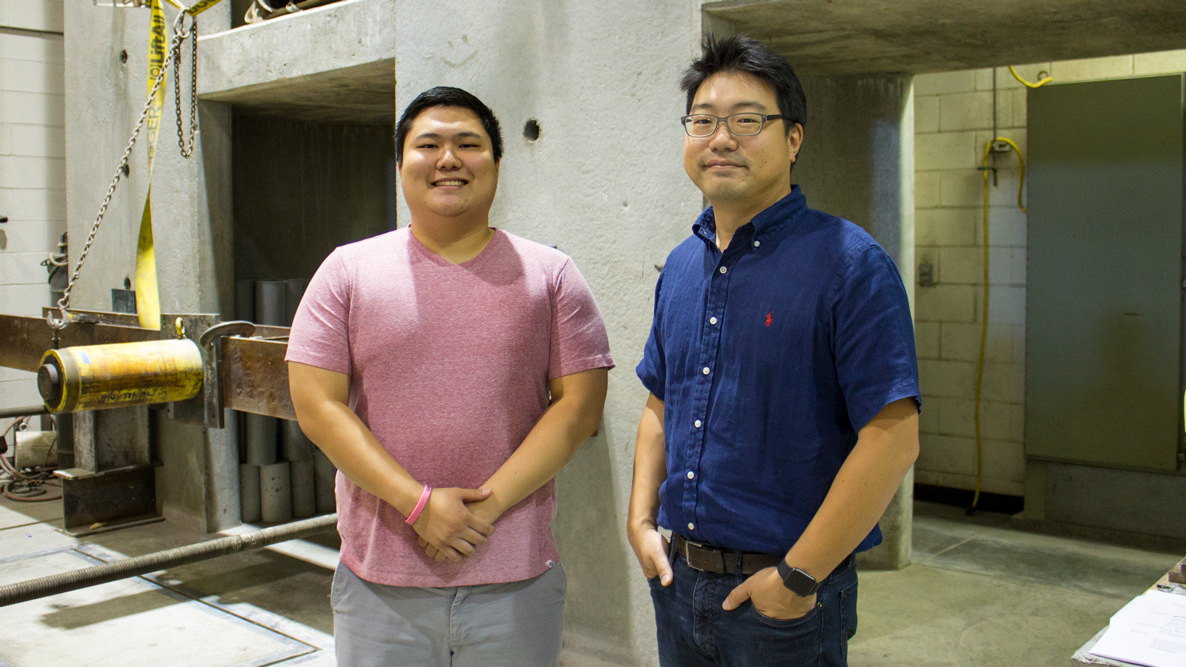Calendar Icon
Oct 25, 2017
Person Bust Icon
By Keith McGuffey
![]() RSS
Submit a Story
RSS
Submit a Story
The Precast/Prestressed Concrete Institute (PCI) has awarded David Gee, a Civil Engineering graduate student working with Dr. Chungwook Sim, the Daniel P. Jenny Research Fellowship for 2017-2018. Gee is a master’s student at the Scott Campus in Omaha who will start his graduate studies on working to eliminate rebar splicing in transverse joints of precast full depth bridge deck panels.
The Daniel P. Jenny Fellowship allows professors and students to get connected with industry experts to advance research in precast concrete. The goal of this fellowship is to engage the interest of young engineering students in the precast concrete industry while providing a research experience of value to both the student and the precast/prestressed concrete industry
According to Sim, no longitudinal post-tensioning and transverse joint is required in cast-in-place deck construction. The concrete placement is generally completed continuously from one end of the bridge deck to the other. The AASHTO LRFD Bridge Design Specifications requires secondary reinforcement in the direction of traffic be placed continuously along the direction of the traffic and to meet the minimum longitudinal reinforcement ratio, approximately two-thirds of the primary transverse reinforcement is provided as secondary reinforcement.
Sim stated that while it is possible to place this secondary reinforcement in precast deck panels, it becomes a challenge in splicing these bars in every transverse joints and details become a significant burden on precast systems by emulating practice in cast-in-place.
“We want to remove this cast-in-place splicing details in precast full depth bridge deck panels to build the precast concrete bridges quicker and more cost effective,” said Gee. This will require the full-depth precast deck panels to be post-tensioned at the site.
“We will study the amount of net compression force required for post-tensioning to tighten these joints together to eliminate the rebar splices in transverse joints for precast deck panels,” said Sim.
As a part of the Daniel P. Jenny PCI fellowship program, Gee will be working with an industry advisory committee, including e.Construct.USA, LLC, Concrete Industries, Inc. and Coreslab Structures, Inc. in Omaha. This will allow him to make industry connections while performing research that is practical and usable in the field.
For more information on the Daniel P. Jenny Research Fellowship, please see the PCI webpage.
Submit a Story

